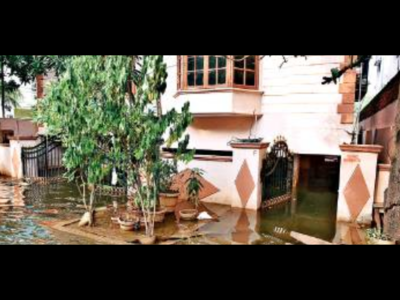The Times of India 24.01.2011
Vasant Kunj residents use kitchen water to maintain park
NEW DELHI: While the government may be making piecemeal efforts to recycle and reuse waste water, a small pocket in southwest Delhi’s Vasant Kunj has taken the lead in reducing its dependency on fresh water.
B-11 residents are recycling waste water from kitchens of seven
households and using the resultant 2,000-odd litres thus salvaged for
watering about 4,000sqm of the Jogger’s Park.
The programme, assisted jointly by the parks and gardens society of Delhi
and forum for organized resource conservation and enhancement (FORCE),
was launched in December and will soon spread to five more housing
societies that include B-1, 9 and 10 in Vasant Kunj and Nilgiri
Apartments and Mandakini Enclave in Alaknanda.
Wing
Commander Raj, general secretary of B-11 said, “We had been using
treated sewage water for watering our park but then FORCE suggested that
we take up this method instead. It turned out to be a more economical
and cleaner way of recycling water. We are tapping the kitchen waste
water of seven flats in two adjacent buildings before it enters the
sewage network. The water is then cleaned in two stages and stored in a
tank from where we pump it out to sprinklers. Twice a day, we get about
2,000l of clean water for the garden,” he said.
The project
cost just over Rs 30,000, of which the parks and garden society
contributed Rs 25,000. “There is no water in Vasant Kunj, especially
ground water. Residents were being forced to either use tubewells or
purchase water from tankers to maintain green spaces. This idea really
made sense and I am now trying to rope in both MCD and NDMC to start it
in their areas on a large scale. For those who are keen on taking it up,
the society will try and fund at least 85-90% of the project,” said SP
Singh, CEO, parks and garden society.
Jyoti Sharma, convener of
FORCE, explained how the idea was implemented. Initially, the flats
were selected based on their proximity to the park. The pipes through
which their kitchen waste water ran down to the sewage system were
tapped and connected to the stormwater drain.
The waste water
was initially being cleaned through one pit using meshes and alum. Then
the water was taken to a storage tank where it was cleaned through a
finer mesh and more alum to settle the soap residue.
“On an
average, a household uses 300-500l of water in the kitchen and there are
two periods of heavy use, once each in the morning and evening. A
sweeper has been employed to clean out the smaller pit each day while
the storage tank is cleaned out every quarter. With water from just
seven homes we have so much that some of it has to be released into the
sewage pit. After the initial investment, residents now only have to pay
for electricity to run the motor and the sweeper for keeping the system
clean,” she said.


